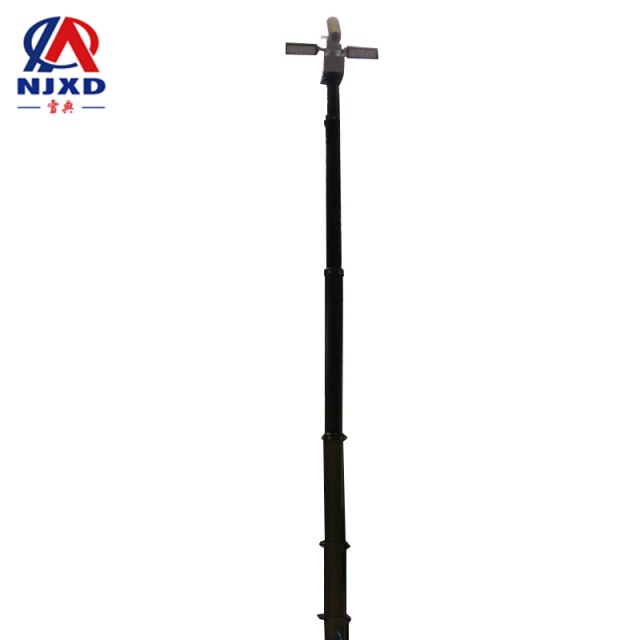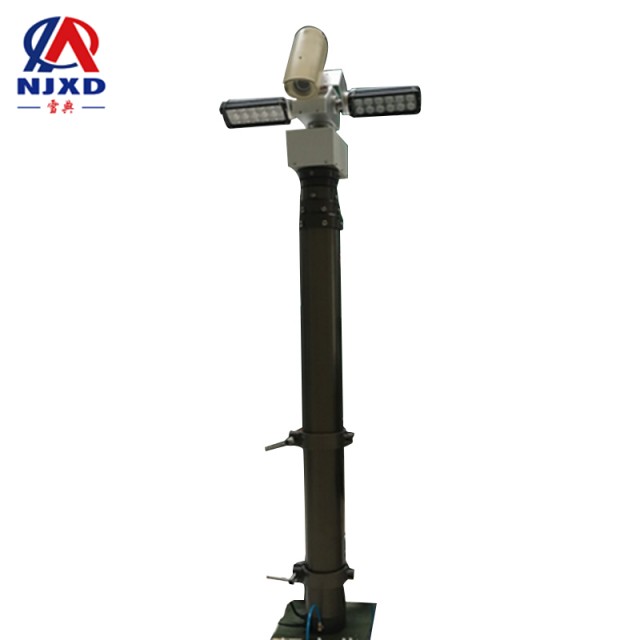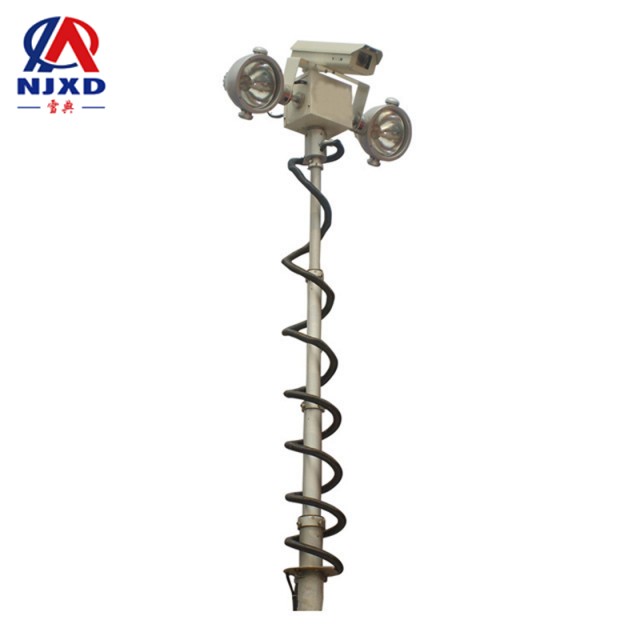NEWS
Features of lifting road monitoring
Time:2021-06-10 View:

Road monitoring is mainly based on fast ball monitoring. Monitoring points are distributed at road intersections and key sections where traffic flow and people flow are relatively concentrated. Through image transmission channels, road traffic conditions are uploaded to the road monitoring command center in real time, the personnel on duty in the center can know the road conditions of each region in time so as to adjust the traffic flow of each intersection and ensure smooth traffic. It can detect and arrange to deal with road traffic accidents in time to monitor the illegal situation of road vehicles, and can also provide technical support for the detection of various cases such as traffic, public security, etc, greatly improve the level and efficiency of law enforcement and case handling by public security organs.
Detailed introduction
Urban Road monitoring system plays an important role in public security prevention and control. Further optimizing the monitoring system and expanding its various functions can not only reduce its construction and maintenance costs, but also serve as transportation, providing technical support for the detection of various cases such as public security, greatly improving the level and efficiency of law enforcement and handling by public security organs.
Urban roads are the basic skeleton of cities. In a sense, urban road monitoring network is the skeleton of urban public security monitoring system. As the main force of road traffic management, the traffic police undertakes the system construction of urban road traffic television monitoring, motor vehicle traffic violation monitoring and capture, smart card port, etc. The monitoring scope of these three systems are all motor vehicle lanes, monitoring objects are all motor vehicles, which are an important part of urban road monitoring network system and play a very important role in building urban public security prevention and control network system.
In order to improve the traffic congestion situation, each city is gradually promoting and implementing the real-time traffic condition Image Monitoring System Plan for each important traffic crossing area, that is, installing an intelligent road monitoring system at each important traffic crossing in the city, through the image transmission channel, the road traffic situation is uploaded to the road monitoring and command center in real time, and the personnel on duty in the center can know the road condition in each region in time, so as to adjust the vehicle flow at each intersection and ensure smooth traffic. To monitor the violation of road vehicles, we can find and arrange to deal with road traffic affairs in time. Whether running a red light or driving in the reverse direction, as long as the motor vehicle violates the Road Traffic Safety Law of the People's Republic of China when passing through the main intersection of the urban area, it will be recorded by the electronic police and camera monitoring equipment, the information of illegal vehicles is printed in the public security traffic command and control center in time. Using high technology to manage traffic improves work efficiency and facilitates drivers.

Features
Road traffic TV monitoring is mainly based on fast ball monitoring. Monitoring points are distributed at urban road intersections and key sections where traffic flow and people flow are relatively concentrated. These monitoring points are the main nodes of urban road network and street surface, to realize traffic security monitoring of the whole city or a certain area, we must first control these nodes. Whether it is from the need of traffic management or from the need of urban public security prevention and control, the planning and layout of these monitoring points must strive to be scientific and reasonable. The general assumption is: relying on the road network structure, gradually build three-level monitoring of point, line and surface. Point control is to realize point-by-point monitoring of all road intersections and key sections. Wire control is to gradually realize the connection between points on the basis of point control, and achieve full monitoring and seamless coverage as much as possible. Surface control is to realize the enclosure control of a certain area on the basis of point control and wire control, forming one, two, three, four, five from the central area to the periphery in sequence...... Multi-level monitoring ring network.
The smart card port monitoring system is adopted in expressways, urban expressways, transit highways, inter-provincial city entrances and exits, urban groups, and urban-rural combination parts, which is more conducive to realizing all-weather automatic recording of all passing motor vehicles, intelligent Identification and Control check are beyond the reach of fast ball monitoring. Looking at the actual situation of domestic road traffic management, many cities have "full of loopholes" in the distribution of highway bayonet monitoring networks. The system equipment is too old to meet the needs, and it is in urgent need of transformation and improvement. The author believes that it is necessary to gradually build a three-level "electronic fence" for urban traffic security prevention and control ". First-class fence: near the junction of expressways, national roads, provincial roads and expressways connected with neighboring provinces and cities, the key target of monitoring is the vehicles entering the city (and the vehicles out of the city are monitored at the same time), high-definition imaging and number plate identification technology should be adopted, and access provincial and municipal monitoring large network layout control. Secondary fence: along the urban-rural fringe, it monitors the roads connecting urban and rural areas and vehicles that can pass through. The key target of monitoring is out-of-town vehicles (and monitors vehicles in cities at the same time), visual monitoring point conditions and different monitoring methods are required. Level 3 fence: Located on the connecting road between city groups or blocks (including villages and towns), it monitors the traffic between groups, blocks and villages and towns, urban areas can generally be realized by expanding the video recording function of the traffic violation monitoring and capture system at intersections, which can greatly reduce the construction and maintenance costs.
At present, many cities are equipped with traffic violation monitoring and capture systems, namely electronic police, and the expansion and application potential of video resources is great. The author suggests that the video recording function should be added to the electronic police system of all intersections, and even the bayonet capture function can be considered to realize the video recording or number identification of all motor vehicles passing through intersections, it can not only monitor remotely through the network, but also effectively make up for the shortcomings of fast ball monitoring at intersections, improve the coverage of video monitoring, and perform remote or local playback query when needed, realizing the comprehensive utilization of video resources can effectively implement intensive grid monitoring for all groups and blocks in urban areas, which is beneficial to investigate and deal with traffic accidents and criminal cases of public security at intersections.
At present, the construction and application level of video surveillance systems in many cities in China are still at a very primary level, especially different video surveillance systems have not been integrated and associated, and video resources have not been integrated and utilized. The development direction of video surveillance technology is centralized management of distributed collection, high-quality image compression processing, open standard unified interface, unified authentication to ensure safety, humanized operation, functional integration, modular structure and diversified transmission. Road traffic monitoring system is not only a part of urban monitoring network, but also has its own unique features and system. Therefore, while actively participating in the construction of the urban public security monitoring platform, we must conscientiously do a good job in the construction of the Intelligent Transportation System integrated control platform and build an application platform with traffic management business characteristics, for example, road monitoring systems such as video surveillance, smart card ports, and intersection electronic police are integrated to realize the integration of various road monitoring resources and associated application.
In a large number of video resources, finding a specific video object in a manual way is like looking for a needle in a haystack, which takes time and effort. Therefore, it is necessary to develop a vehicle running track investigation system based on the integration and integration of various video monitoring resources. Through the analysis of various typical traffic monitoring video streams such as road TV monitoring, smart card port, intersection electronic police, etc, according to the characteristic information such as type of vehicle, color, and size, search for specified vehicles in various traffic monitoring video information of the city and extract video clips containing specific targets, so as to master or find out the appearance time of specific vehicles, running track to provide technical support for investigating and dealing with traffic accident escape and criminal cases of public security.
To sum up, the main functions of the urban road monitoring system are as follows:
1. Real-time monitoring of road conditions: cameras at each intersection will send real-time images of the monitored area back to traffic commanding center in time, so that traffic commanders can grasp the traffic conditions at each intersection and road section in real time, for example: whether the traffic flow and signal lights of the road section work normally, whether there are violations and traffic accidents. This information can help traffic management departments to take appropriate treatment methods in a timely manner.
2. Real-time video recording: video surveillance images will be saved to traffic commanding center video servers as evidence basis for handling various emergencies such as traffic accidents, violations, and even public security crimes.
